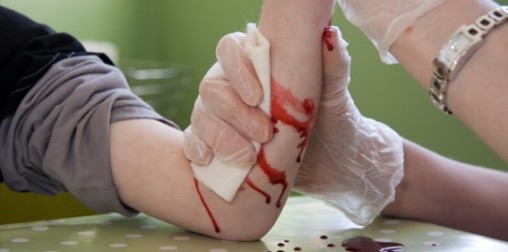First Aid for Common Cuts

Cuts and scrapes are a normal part of life, especially if you have kids! Generally, small cuts and abrasions will heal completely on their own without much help, but there are a few instances where first aid is required.
MEDIUM SIZED CUTS
It happens to the best of us – slicing a thumb in the kitchen while chopping the veggies, or catching our finger with a box cutter. Tiny cuts just warrant a few choice swear words and maybe running the cut under water. For bigger cuts, there are a few first aid steps you need to take:
- Place pressure and a bandage or towel directly over the wound to stem the bleeding. If bleeding soaks through, do not remove the towel, but place another one on top.
- Once bleeding has been controlled, wash the wound with mild soap and water. Do not wash with iodine or hydrogen peroxide as this can also damage the healthy tissue.
- Cover the wound with antibiotic cream and place a bandage securely on top. Change the bandage every day – wounds heal much more quickly if they are dry and exposed to air. Having the same bandage continuously in place promotes a moist environment for bacteria to grow.
WHEN SHOULD I SEEK MEDICAL ATTENTION?
If you notice any of the below, go and see a medical professional immediately as you may require stitches or further treatment:
- Jagged or gaping edges of the wound.
- Debris or other foreign material embedded in the wound that can’t be flushed out.
- Redness or a discharge coming from the wound. This, also with the patient experiencing a fever, are signs of an infection.
- The wound is numb.
- If the patient has not had a tetanus shot for over 5 years.
First aid is so vital in circumstances like these, as without proper care, an ‘everyday’ cut could quickly turn into a life-threatening situation. To take one of our fun and interactive (we promise!) first aid classes at Varsity Lakes or Coomera, book online at https://firstaidae.com.au/first-aid-courses/first-aid-course-inlcuding-cpr

 Construction Defibrillator Bundles
Construction Defibrillator Bundles